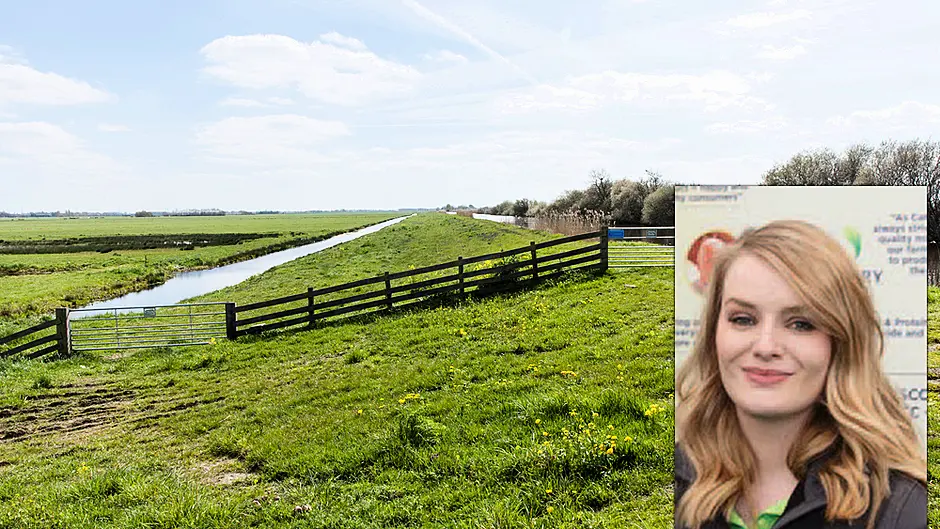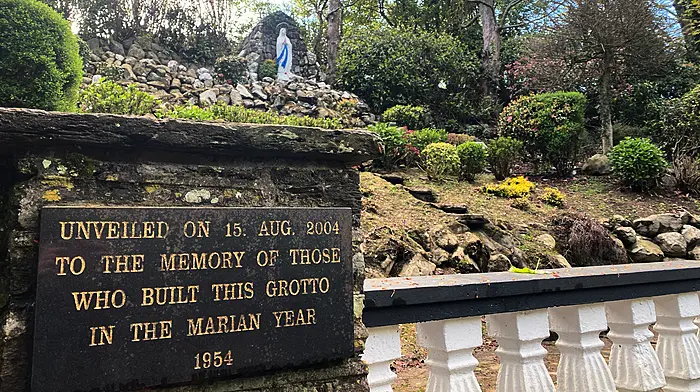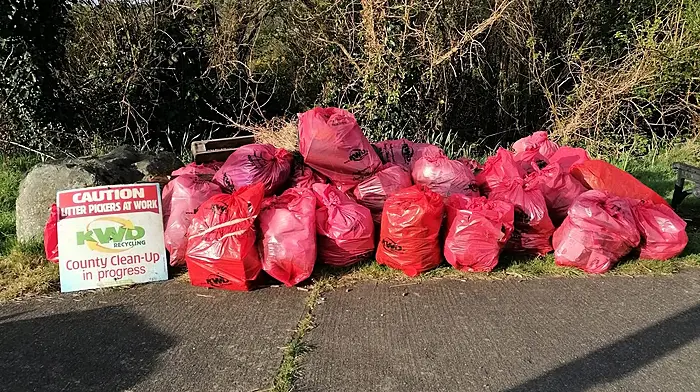BY AOIFE FEENEY
IN West Cork, we have an abundance of waterways in the forms of rivers, lakes and our coastal water bodies. Our landscapes are connected through the rain that falls on them and the rivers flowing through them. Our water systems are linked to the biodiversity surrounding us and are a key part of our tourism industry providing natural amenities such as beaches, lakes, blueways and river walks.
The Agricultural Sustainability Support and Advisory Programme (ASSAP) was founded to help support farmers in restoring and protecting these vital water ways that are so important to our local communities.
This means that all Carbery farmers and farmers in priority areas for action are entitled to a free, confidential farm assessment on a voluntary basis with one of our dedicated farm advisors. To date, over 150 suppliers have participated in the programme with very positive feedback. We would encourage all suppliers to take part in this programme.
Reducing Nitrogen losses at farm level
Understanding how nitrogen (N) losses occur from the farm is critical to mitigating against this pressure. Losses occur where excess N fertiliser is applied above the crop requirement, especially when crop growth conditions are poor. Excess N in the form of nitrate in the soil not utilised by the grass or crop may be lost or leached to groundwater during heavy rainfall. Nitrogen does not bind tightly to soil and as a result is prone to leaching in free draining soils.
Early and late nitrogen applications at farm level are the highest risk to water quality. Grass growth in the early months of the year can vary. The response to N is low at this time which can result in poor recovery by the crop and increased risk of loss to water. Soil and weather conditions need to be monitored prior to applying N early in the early growing season.
N losses are minimal during the growing season due to reduced rainfall and a higher requirement by the crop. Care needs to be taken when spreading N in autumn time, as it is a period of increased rainfall and decreasing crop growth. The closed spreading season is the period of the year with greatest risk of N loss to surface and groundwater, with up to 45% of the years N lost during this period.
Ways to minimise nutrient losses from your farm:
- When spreading fertiliser or slurry, follow the three R’s:
• Right Place (spread on fi elds recently cut or grazed, spread P’s on low index fields)
• Right Time (avoid spreading when rain is forecast, ensure soil temperatures are up >5.5 degrees and grass growths should be climbing. Ensure ground is trafficable)
• Right Rate (avoid over supplying plants with nutrients as they will just leach)
- Use low emission equipment (LESS) when spreading slurry. This will allow for a reduction in the amount of chemical N required and it will reduce ammonia losses to air
- Ensure soil fertility is optimum for lime, P and K. Follow your nutrient management plan (NMP). On moderate to highly stocked farms, aim for P and K index 3
- Maintain buffers near water courses when spreading slurry in line with regulation (at least 5-10m)
- Soil sample regularly and update your NMP
- Ensure soil is not compacted, this will allow the root system of plants to access and absorb available nutrients readily
- Maintain green cover to absorb excess N. Tillage farmers should consider sowing catch/cover crops to avoid soils lying bare in Autumn and Winter
- Maximise the use of slurry and switch to using protected urea to reduce emissions and save costs as more nitrogen will be available to the plant.
Nitrogen Use Efficiency (NUE)
Nitrogen Use Efficiency is a relatively new term. NUE calculates all N farm inputs vs the farm outputs (milk, meat, crops). N input sources on your farm typically come from chemical fertiliser, purchased feeds (concentrates and forage) and organic manure.
Nitrogen use efficiency on livestock farms across Ireland is typically 20 -25% at present, this means 20 - 25% of the N inputs on the farm are captured in farm products sold. Improving this figure, will reduce losses to water. The target is to increase NUE to 35% on grassland farms.
What can farmers do to improve NUE?
- Implementing the above measures
- Reduce use of chemical N through better use of slurry & use of clover
- Improving grass growth and utilisation
- Feeding less concentrates and/or lower protein concentrates, particularly during the grazing season
- Improving NUE has many opportunities not only to improve water quality by reducing nitrogen losses through leaching, but also by reducing costs and increasing profitability at farm level.
Enhancing biodiversity for water quality
Biodiversity has a key role in improving water quality. Hedgerows near streams and drains can act as a great buff er trapping nutrients before they have a chance to reach water courses. Some actions farmers can take to enhance biodiversity are:
- Plant native trees and hedgerow species and fence newly planted areas to allow them to grow without being disturbed by grazing animals.
- Allow areas to grow wild, particularly in the summer months from May onwards. is provides natural vegetation for small mammals, bees and insects. An simple way of doing this is to allow grass in headlands and wildlife corridors to grow to seed.
- Avoid spraying under wires – the old tradition of keeping your farm neat and tidy and free of weeds is no more. Avoid spraying weeds, nettles etc. under wires and allow them to grow. If they interfere with fencing, strimming them is much better for the environment than spraying.
- Where you have open areas near water courses, consider planting native species. is will help biodiversity but will also help water quality and stabilise river banks.
Carbery suppliers who want to know more about ASSAP, contact Aoife Feeney on 023 88 22238 or afeeney@carbery.com. Contact Teagasc Clonakilty if you are a drystock, tillage or other farming enterprise.








